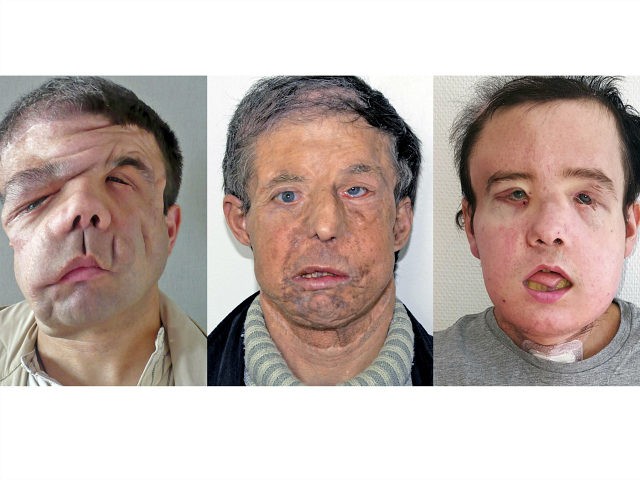Dr. Laurent Lantieri of the Georges-Pompidou Hospital has successfully completed a second face transplant on Jerome Hamon.
In Hamon’s 30s, he received his first face transplant. Hamon suffers from neurofibromatosis, a condition that causes severely disfiguring tumors. He lived with that first new face for some years before becoming ill in 2015. The medications he was prescribed for that illness interfered with the anti-rejection medications he was taking, and eventually, the face he had learned to live with began to rapidly deteriorate.
In the following months, Hamon existed in a tortured state that Dr. Lantieri described as “the walking dead.” He had no skin, no ears or eyelids, and he could neither speak nor eat. This hellish existence persisted until January 2018 when a new donor finally became available. That was only the beginning, however. First, every drop of blood in Hamon’s body had to be manually replaced in order to minimize the potential of antibodies that could have drastically increased the chances of rejection.
While Hamon’s first donated face was significantly older than him at 60 years, the second is about two decades younger. In an interview, the 43-year-old joked that he had “become 20 years younger.” The transplant seems to have gone very well indeed; Hamon has even recently been able to travel.
The medical community has praised Lantieri’s work. Dr. Frank Papay of the Cleveland Clinic, first among U.S. physicians to perform a face transplant, said, “the fact that Professor Lantieri was able to save this patient gives us hope that other patients can have a backup surgery if necessary.” He called the innovative techniques being developed by Lantieri and his peers a “holy grail” of transplant medicine.
And while Lantieri is pleased with the results, he would rather not repeat them if at all possible. The process is arduous and only comes along if a previous procedure has gone terribly wrong. “The other patients I’m following, some have had some alteration of their transplant over time, but they are doing fine,” he said. But “I hope not to do any future transplants like this.”

COMMENTS
Please let us know if you're having issues with commenting.